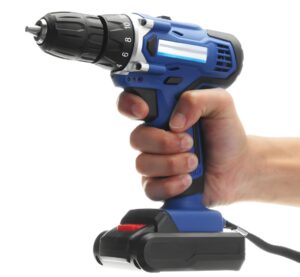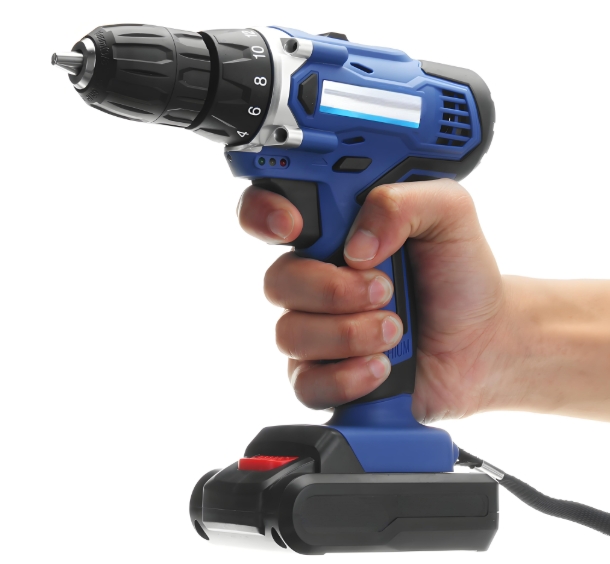Selecting the appropriate power output for an electric screwdriver motor is a crucial decision that can significantly impact the tool’s performance, efficiency, and suitability for various tasks. This comprehensive guide will delve into the key factors to consider, provide examples of popular brands and models, and offer detailed insights to help you make an informed choice.
Power output in an electric screwdriver motor is typically measured in watts (W) or volts (V). Watts represent the rate at which electrical energy is converted into mechanical energy, while volts indicate the electrical potential difference. A higher wattage or voltage generally signifies more power, enabling the motor to generate greater torque and rotational speed. However, power output alone is not the sole determinant of a screwdriver’s capabilities. Other factors, such as torque, speed settings, and battery capacity, also play essential roles in its overall performance.
The intended use of the electric screwdriver is the primary factor influencing power output selection. For light-duty tasks such as assembling furniture, installing small fixtures, or working with delicate electronics, a lower-powered screwdriver with a wattage range of 10-20W or a voltage of 3.6V-7.2V may suffice. These models are lightweight, compact, and offer precise control, making them ideal for tasks that require finesse.
On the other hand, heavy-duty applications like construction, automotive repair, or industrial assembly demand higher power output. Screwdrivers with wattages exceeding 50W or voltages of 18V and above are better suited for these tasks. They can deliver substantial torque, allowing them to drive large screws, bolts, and fasteners into tough materials such as wood, metal, and concrete.
The type of material being worked on and the size and type of fasteners also influence power output requirements. Soft materials like wood and plastic are relatively easy to penetrate, so a lower-powered screwdriver can handle them effectively. However, when dealing with hard materials such as steel, concrete, or hardwood, a more powerful motor with higher torque is necessary to ensure efficient driving and prevent the screwdriver from stalling.
Similarly, the size and type of fasteners matter. Larger screws, bolts, and lag screws require more torque to drive in, while self-tapping screws and small machine screws can be handled by lower-powered models. It’s important to match the power output of the screwdriver to the specific fastener requirements to achieve optimal results.
If you opt for a cordless electric screwdriver, battery life and runtime are crucial considerations. Higher-power motors consume more battery power, resulting in shorter runtimes. Therefore, if you anticipate long periods of continuous use or working in remote locations without access to a power source, choosing a screwdriver with a larger battery capacity or the option to swap batteries is advisable.
Some cordless models offer multiple battery options, allowing you to select the one that best suits your needs. Additionally, look for features such as battery indicators and fast-charging capabilities to ensure you can work efficiently without interruptions.
The power output of an electric screwdriver can also affect its weight and size. Higher-powered models tend to be bulkier and heavier, which may cause fatigue during extended use. If comfort is a priority, especially for tasks that require prolonged operation, consider a screwdriver with a balanced design, ergonomic grip, and lightweight construction. Some brands offer models with adjustable handles or soft-grip materials to enhance user comfort and reduce hand strain.
Power output is often correlated with the price of an electric screwdriver. Higher-powered models with advanced features typically come at a higher cost. It’s essential to set a budget and determine the power output and features that are necessary for your specific needs. While it may be tempting to opt for the most powerful model available, it’s important to consider whether the additional features and power are worth the investment. For occasional or light-duty use, a more affordable, lower-powered screwdriver may be sufficient.

Bosch is a renowned brand in the power tool industry, offering a wide range of electric screwdrivers with varying power outputs.
- Bosch PS31-2A 12V Max Lithium-Ion Cordless Screwdriver: This compact and lightweight model is suitable for light to medium-duty tasks. With a power output of 12V, it provides up to 265 in-lbs of torque, making it capable of handling most household and DIY projects. It features two-speed settings (0-400 RPM and 0-1,500 RPM), allowing for precise control depending on the task. The screwdriver also comes with a built-in LED light for improved visibility in dark spaces and a 12V lithium-ion battery that offers long runtime and fast charging.
- Bosch GDS18V-190 18V Cordless Impact Wrench: Although primarily an impact wrench, it can also be used as a powerful screwdriver. With an 18V power output, it delivers up to 1,900 in-lbs of torque, making it suitable for heavy-duty applications such as automotive repair, construction, and industrial assembly. It features three-mode settings (impact, tightening, and loosening) and a brushless motor for increased efficiency and longer tool life. The GDS18V-190 comes with a high-capacity 18V lithium-ion battery and a rapid charger.
DeWalt is another leading brand known for its durable and high-performance power tools.
- DeWalt DCF680N 18V XR Lithium-Ion Cordless Screwdriver: This 18V screwdriver offers a power output of up to 430 in-lbs of torque, making it suitable for a wide range of tasks, from light assembly work to more demanding projects. It features a 2-speed gearbox (0-400 RPM and 0-1,500 RPM) for precise control and a 1/4-inch hex chuck for quick and easy bit changes. The DCF680N also comes with a built-in LED work light and a 18V lithium-ion battery that provides long runtime and fast charging.
- DeWalt DCD791D2 20V MAX Lithium-Ion Cordless Drill/Driver: While primarily a drill/driver, it can also be used as a powerful screwdriver. With a 20V power output, it delivers up to 530 in-lbs of torque, making it suitable for heavy-duty drilling and driving tasks. It features a 2-speed transmission (0-600 RPM and 0-2,000 RPM), a 1/2-inch ratcheting chuck, and a built-in LED work light. The DCD791D2 comes with two 20V lithium-ion batteries and a charger.
Makita is known for its high-quality and reliable power tools, including electric screwdrivers.
- Makita XFD10R 18V LXT Lithium-Ion Cordless Driver-Drill: This 18V driver-drill offers a power output of up to 480 in-lbs of torque, making it suitable for a variety of applications, from light-duty tasks to more heavy-duty projects. It features a 2-speed transmission (0-400 RPM and 0-1,700 RPM) for precise control and a 1/2-inch keyless chuck for easy bit changes. The XFD10R also comes with a built-in LED work light and a 18V LXT lithium-ion battery that provides long runtime and fast charging.
- Makita TD110D 12V max CXT Lithium-Ion Cordless Impact Driver: This compact and lightweight impact driver is ideal for light to medium-duty tasks. With a 12V power output, it delivers up to 1,360 in-lbs of torque, making it capable of driving most screws and bolts. It features a 2-speed transmission (0-2,000 RPM and 0-2,800 RPM) and a 1/4-inch hex chuck for quick and easy bit changes. The TD110D also comes with a built-in LED work light and a 12V max CXT lithium-ion battery that offers long runtime and fast charging.
Milwaukee is a trusted brand among professionals, offering a range of high-performance electric screwdrivers.
- Milwaukee M18 Fuel FDD2-602X 18V Lithium-Ion Cordless Drill/Driver: This 18V drill/driver features a brushless motor that delivers up to 700 in-lbs of torque, making it suitable for heavy-duty applications. It has a 2-speed transmission (0-500 RPM and 0-2,000 RPM) and a 1/2-inch ratcheting chuck for precise control and easy bit changes. The M18 Fuel FDD2-602X also comes with a built-in LED work light and two 18V lithium-ion batteries and a charger.
- Milwaukee M12 Fuel FID2-402X 12V Lithium-Ion Cordless Impact Driver: This 12V impact driver offers a power output of up to 1,400 in-lbs of torque, making it capable of handling a variety of tasks, from light assembly work to more demanding projects. It features a 3-mode drive control (1,800 RPM, 2,600 RPM, and 0-3,000 IPM) for precise control and a 1/4-inch hex chuck for quick and easy bit changes. The M12 Fuel FID2-402X also comes with a built-in LED work light and two 12V lithium-ion batteries and a charger.
Choosing the right power output for an electric screwdriver motor requires careful consideration of various factors, including application, material, fastener type, battery life, comfort, and budget. By understanding your specific needs and evaluating the available options, you can select a screwdriver that provides the optimal balance of power, performance, and usability. Popular brands such as Bosch, DeWalt, Makita, and Milwaukee offer a wide range of models with different power outputs to suit various tasks and user preferences. Whether you’re a DIY enthusiast or a professional contractor, investing in a high-quality electric screwdriver with the appropriate power output will enhance your productivity and make your projects easier and more efficient.
If you have any further questions regarding specific tasks or need more detailed recommendations on electric screwdriver models, feel free to share additional information, and I can provide more targeted advice.


